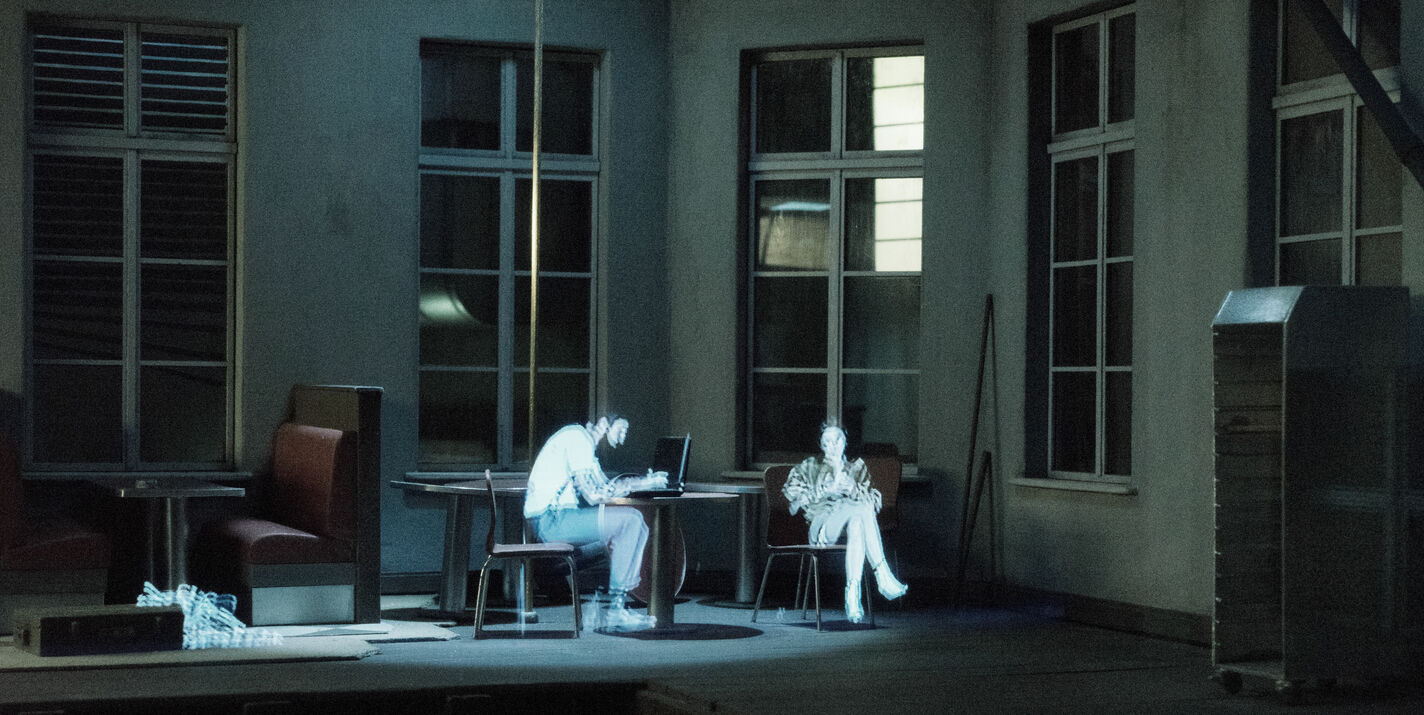The city appears as a model of a self-producing machine, being subject to principles of chance as well as following a complex regularity.
A non-linear narrative of the myth and fetish of Berlin emerges: a jogger on her daily rounds, a newcomer embracing the city as an adventure playground, a parking garage through which cars let their headlights roam, a hipster saying goodbye to his deceased father. These are daily novels of the city, whether in a fast food restaurant, in a backyard, in an empty apartment. As in a detective story, the scenes seem to be compellingly connected to each other, only to become independent again immediately afterwards.
Hologram-like figures are created by means of glass panes integrated into the model at a 45° angle and reflecting images from hidden monitors: a trick effect which is also known as "Pepper's Ghost." The superimposition of built model space and transparent projection creates its own kind of virtual reality, an "analog VR." The space can be experienced as real through its physical presence, but is subject to a rupture through its scaling; the ghosts are images of "real" people, but as a transparent projection they remain disembodied and therefore unreal.
In the experimental setup, both levels come together. They depend on each other in this space of experience being complement and contrast at the same time. What is real? The viewer's "will" to perceive what is seen as real is described in Hartmut Böhme’s Culture and Fetishism (2006) as "pretending something-against-better-knowledge" and as an act of fetishization.
- Project Lead: Michael Birn
- Contact: jmb(a)berlin.de
- Webseite: Ghosts of Berlin

